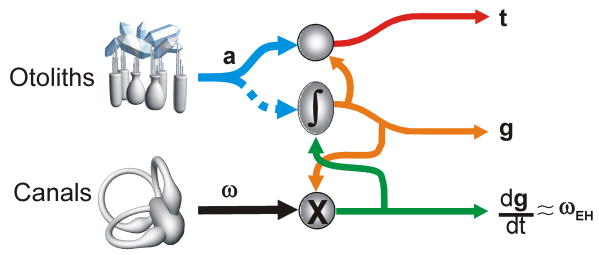Fig. 2.
Schematic representation of the theoretical computations to solve the tilt/translation ambiguity. Head-centered angular velocity, ω (e.g., from the canals) combines nonlinearly (multiplicatively) with a current estimate of gravitational acceleration (i.e., tilt) to compute the rate of change of the gravity vector relative to the head (dg/dt = -ω×g where “×” represents a vector cross product). For small amplitude rotations, dg/dt represents the earth-horizontal component of rotation, ωEH (green). Integrating (∫) dg/dt and taking into account initial head orientation (e.g., from static otolith signals; dotted blue) yields an updated estimate of gravitational acceleration, g (orange; g = -∫ω×g dt). This g estimate can be combined with the net acceleration signal, a (blue; from the otoliths) to calculate translational acceleration, t (red). This schematic is based on solving the equation t=a-∫ω×g dt (e.g., see [22,23]).

